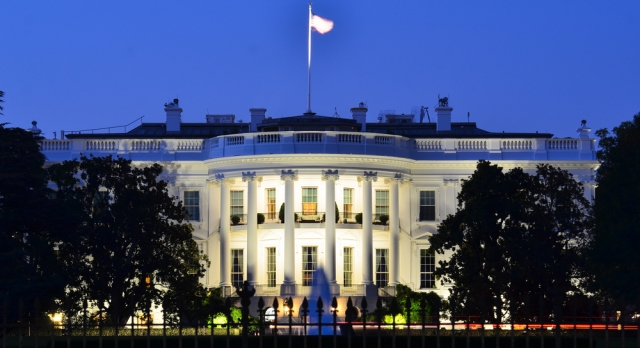 Over the weekend, the press reported on a leaked draft of portions of the White House’s immigration proposal, and the coverage since then has been largely a frenzied discussion of whether the leak will kill Senate negotiations. There shouldn’t be much chance of that, given the immense pressure on the Senate to not only come up with a proposal, but actually draft legislation that can be debated and voted on this year. Now that at least some of the Administration’s ideas are out in the public eye, it’s useful to treat them as what they are: basic discussion points on what might be in an eventual bill. In the long run, the draft proposal may help to encourage the constructive conversation that the Administration has sought to have on reform.
Over the weekend, the press reported on a leaked draft of portions of the White House’s immigration proposal, and the coverage since then has been largely a frenzied discussion of whether the leak will kill Senate negotiations. There shouldn’t be much chance of that, given the immense pressure on the Senate to not only come up with a proposal, but actually draft legislation that can be debated and voted on this year. Now that at least some of the Administration’s ideas are out in the public eye, it’s useful to treat them as what they are: basic discussion points on what might be in an eventual bill. In the long run, the draft proposal may help to encourage the constructive conversation that the Administration has sought to have on reform.
In its current form, the White House text is really just a draft, right down to the “for discussion” language plastered all over the leaked pages. It is incomplete; most noticeably, lacking a discussion of permanent and temporary visa reforms. What it does do, however, is mirror the principles the President laid in his Las Vegas speech on January 28, 2013.
The proposals that have been reported in the press include:
A legalization process that is streamlined, but that recognizes that the process of moving 11 million people through the system will take time. The proposals outline a multi-step legalization process, including authorization for an initial pre-registration period pending the start of the Lawful Prospective Immigrant status registration process, a renewal of status after four years, and application for LPR status beginning at roughly the 8 year mark. The legalization proposal includes:
- A direct path to citizenship, covering all people in U.S. who are present at date of introduction, generous exceptions and waivers to cover people who are in the country with final orders and some crime-related exceptions, generous family unity provisions, and special provisions to streamline the process for persons with DACA status.
- Visa backlog reduction will be included, so that lawful permanent resident status will be available to the current undocumented population 30 days after the existing visa backlogs are eliminated or 8 years, whichever comes first.
- Judicial review and confidentiality protections.
A mandatory worker verification system that provides greater protection for employees, including:
- Phased-in use of mandatory employment verification system over the course of four years for most employers.
- Expanded protections for workers, particularly in cases where the system fails to identify them as work authorized.
- Several important labor and employment protections for protecting immigrant workers rights.
Enforcement and border protection provisions based on what the Administration believes is needed going forward, rather than the same old solutions for “tightening the border,” including:
- Improvements at ports of entry, and expanded role of border communities.
- Corrections in some of the worst problems from the 1996 law, including making more rational the definition of so-called “aggravated felonies”, and expanded attention to combating transnational criminal enterprises—money laundering and other crimes that are real sources of concern at border.
- Immigration Court reforms including greater access to counsel, alternatives to detention programs and increases in court personnel.
People have been hungry for details of both the White House and Senate proposals, so any scrap of information is pounced upon, chewed up, and digested and will become the source of endless discussion. Rather than point fingers, however, the best thing for the Senate and other politicians to do is give us more—more details, more legislation, more complete analysis of what they think is necessary to move the ball forward.
FILED UNDER: Children, E-Verify, Executive Branch, Immigration Law, immigration legislation, President Obama, undocumented immigration, Visas, White House


